#planning tips
Text
Saw a post about helping people that used the analogy of "if you see someone fall off a cruiseship and theres a life preserver ring on the wall next to you do you walk away or do you throw them the life preserver? Of course you throw them the life preserver." And i dont want to add to or tag the post with any sort of correction because its literally not the point at all but i am desperate to say that the first thing they teach you when you work on a cruise ship is that if someone falls overboard you Do Not Look Away
If theres a life preserver nearby but you have to turn your back to get it, tough luck. If theres someone nearby who can't hear you but you could run and get them, absolutely not. You see someone go overboard you point at them and never ever let them out of your sight because looking away even once could mean losing them forever, so you just have to trust that someone will hear you scream for help but you cant for any reason look away
And maybe that adds to the life preserver metaphor somehow but mostly i just need you to know if you spot someone in the water you point at them and you watch them close and you scream for help
#water safety tips with grinchwrapsupreme#what could the metaphor be#um#if you see someone struggling and they are seconds from 'drowning' make sure theyre not going to go under before working on a rescue plan?#idk#point and stare and scream babes thats the key
35K notes
·
View notes
Text

#What to do if Your Arctic Expedition Doesn’t go as Planned#tips#tricks#life hacks#helpful hints#advice#exploration#the Arctic
4K notes
·
View notes
Text
Question into the ether for my unorganised girlies: for my fellow people who have a hard time utilizing agendas/planners, what's your organization trick that works for you?
Bonus question: if you have a lot of ideas and tend to get paralysed and do none of them, how do you break out of that?
#organization#planner#overwhelmed#organization tips#planning tips#i hope this reaches somebody with good tricks out there#my brain is so scattered that ive been struggling a lot lately#ryuuspeaks
1 note
·
View note
Text
Basic Financial Rules To Live By 💰✨
Create a plan that shows how much money you get and how much you spend. This helps you see where your money goes.
Set aside a part of your money as savings. Try to save at least 10-20% of what you earn.
Be careful with borrowing money, especially if you have to pay back a lot of extra money (interest).
Save some money for unexpected things like medical bills or losing your job. Aim to have enough to cover your living costs for a few months.
Put your saved money into different things that can make it grow, like stocks or real estate. Be patient, as it takes time.
Don't spend more money than you make. Stick to buying what you really need, not just what you want.
Decide what you want to do with your money, both in the short term (like a vacation) and long term (like retirement).
Set up automatic transfers to your savings and bills so you don't forget to save or pay your bills on time.
Make saving money a top priority before spending on other things.
Regularly look at your money situation, adjust your plan as needed, and see how your investments are doing.
Pay your bills on time and use credit wisely (like credit cards) to keep a good credit score, which can help you get better deals on loans.
Save money for when you're older and don't work anymore. Use retirement accounts to help with this.
Think before you buy things. Don't buy something just because you want it; think if it's necessary.
Keep learning about how money works and how to make smart money choices.
Only use your emergency fund for real unexpected problems, not for things you just want to buy.
#financial planning#finance#investing#money#girl math#wealth#level up journey#it girl#dream girl#dream girl guide#dream girl tips#dream girl journey#that girl#becoming that girl#educate yourself#wealth mindset#growth mindset#success mindset
3K notes
·
View notes
Text
When you’re writing with no plan and suddenly the plot takes a turn:
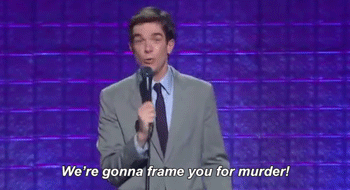
#my poor characters#I try to make a plan but then it just#oh no someone’s dead and ruh roh it was MUUUURDER#writing#write#writing memes#writing tips#funny#lol#meme#john mulaney#ao3#archive of our own#fanfic#fanfiction
3K notes
·
View notes
Text
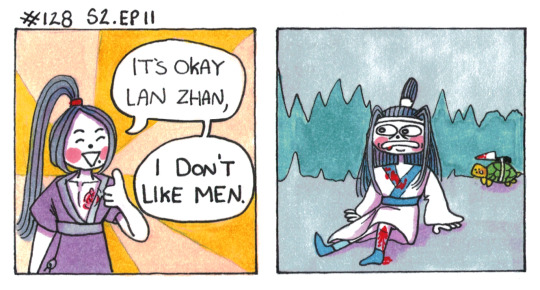
His palms are sweaty, knees weak, arms are heavy.
[First] Prev <–-> Next
#poorly drawn mdzs#mdzs#wei wuxian#lan wangji#tulu xuanwu#blood#Vomit on his sweater already; mom's spaghetti#I love drawing teenji because he gets to be a lot more expressive than Older Lan Wangji.#wwx is trying so hard to be supportive and it keeps backfiring for lwj.#“There's no way I would ever want you carnally ^_^” meanwhile the guy who wants him carnally is losing his mind in agony.#Hot tip if you keep finding yourself in Lan Zhan's shoes: consider being more obvious. Give up on trying to be subtle with an ADHDer.#His game is SO BAD. Abysmally bad rizz. I do not think it was possible for these to to have a chance to get together in this life.#He has no plan. He has no healthy outlet for his feelings. He is looking at his half naked crush and losing his shot.#F in the chat for Lan Zhan. He's just been accidently rejected and he is about to be accused of being straight.#Meta commentary moment: I am going to try very hard to be more consistent with outfits and details across comics#I have had some...difficulties in the past with forgetting details (COUGH the vermillion mark COUGH)#New year new goals! Wish my ADHD eyes and brain good luck!
1K notes
·
View notes
Text
i have been reading through the diary I kept from ages 14-17 and realising how helpful it can be to keep a record of how you're feeling at different moments.
not only is it helpful to write down and process how your feeling and give yourself time to truly think about it, it's nice to have something to look back on. to not just remember how you felt about a certain situation but to actually have yourself from that time tell you.
and also, from an adhd perspective, it's really lovely to have reminders of things I'd almost entirely forgotten. it's easy to think that your life right now isn't interesting, but in 5 years time? to know what songs you were listening to or book you were reading or even that Thing that you were so worried about but now you can't even remember the details. it's nice to have a physical reminder that time passes and things really can get better.
#i think part of whats makes it so special to me is that (like it is for a lot of people) those ages where so *much*#and i was so stuck in my head and socially anxious and i feel like those years of school rly shaped who i am now ect#but id kind of forgotten? its become a blur emotions over time and its nice to see it clearer#but also how i changed? and to read into it and see what i did or didn't write#im also a big fan of the inner child and doing things for your younger self and its a lovely gift to have her speaking to me directly#also if you want to journal i highly recommend doing it in a normal notebook rather than a pre planned one#it gives you the freedom for it to be whatever you want with none of the pressure#recovery#tips
439 notes
·
View notes
Text
HOURLY BENEFITS OF FASTING
dc: source pinterest
4-8 hrs
• Blood sugars fall
• All food has left the stomach
• Insulin is no longer produced
12 hrs
• Food consumed has been burned
• Digestive system goes to sleep
• Body begins healing process
• HGH begins to increase
• Glucagon is released to balance blood sugars
14 hrs
• Body has converted to using stored fat as energy
• HGH starts to increase dramatically
16 hrs
• Body is ramping up fat burning
18 hrs
• HGH starts to skyrocket
24 hrs
• Autophagy begins
• Drains all glycogen stores
•Ketones are released into the blood stream
36 hrs
• Autophagy increases by 300%
48 hrs
• Autophagy increases 30% more
• Immune system reset, and regeneration starts
• Increased reduction in inflammatory response
72 hrs
• Autophagy maxes out
#@na motivation#@na tips#ed not sheeren#meanspø#th1nspø#tw restrictive ed#@na rules#ana tricks#ed tmblr#meal plan#tw ana fast#intermittent fasti#lose weight fast#fasting#tw ana shit#ana tips#ana meal#ana dairy#ana trigger#ana rant#ana inspo#model#inspo#aesthetic#core#coquette#not proana
1K notes
·
View notes
Text
I wanna know which of y’all’s men is “just the tip, baby”-ing his way to your cervix and breeding you
#this is brought to you by Sanji#who swears he’s just going to put the tip in since he hasn’t stretched you out enough for his slightly thick but long pretty dick#but five seconds after feeling the way you’re squeezing around his tip he is pushing the rest of the way in until his hips are flush to you#he tells you he can’t help it because you feel so damn good#I feel like this thought also applies to Eustass Kid but he never planned to just put the tip in#only told you that so you’d relax and let him inside you#in other fandoms I feel like this applies to Taiju and Draken and maybe Mitsuya#maybe shuji too but where he never intended for it to be only the tip but wanted to get your under him
482 notes
·
View notes
Note
I feel stupid for asking this so im using anon, but how do you draw the hijab? Whenever I try it looks like an egg www
also, Ramadan Mubarak! May Allah bless you
Don’t feel stupid for asking! Drawing is hard no matter what you’re drawing, so don’t be afraid to ask for help^^ But honestly even I feel like the best of my hijabis look a little egg-like, and that’s okay!
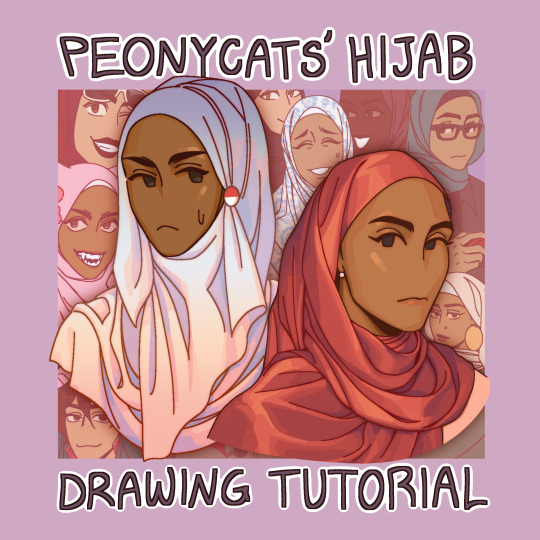
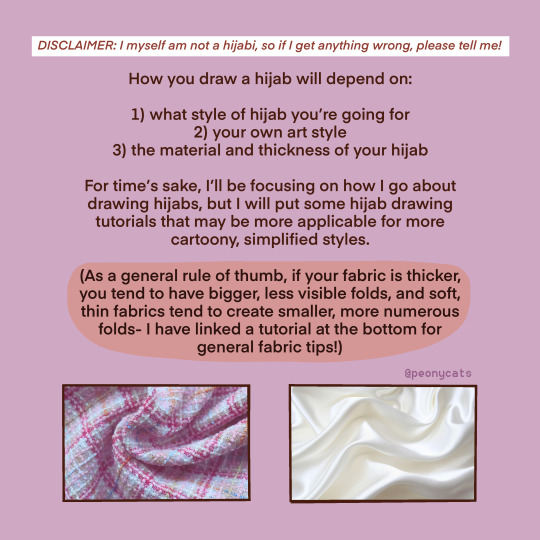
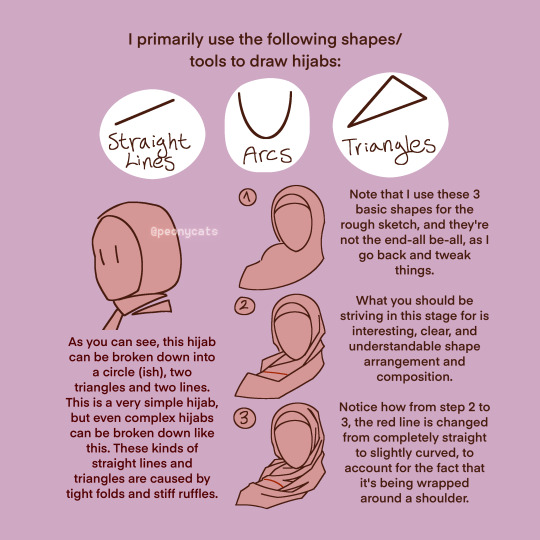

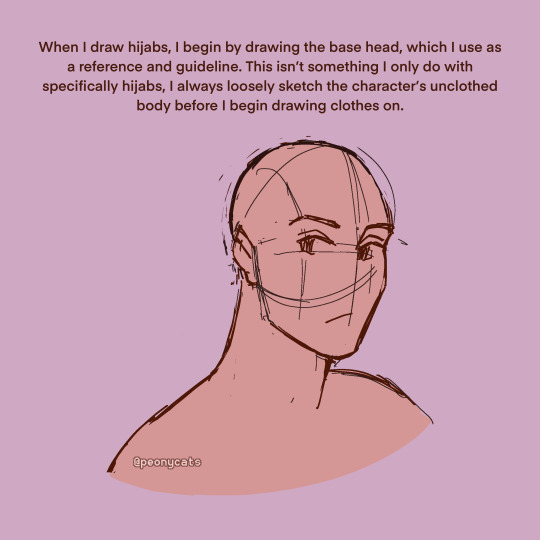
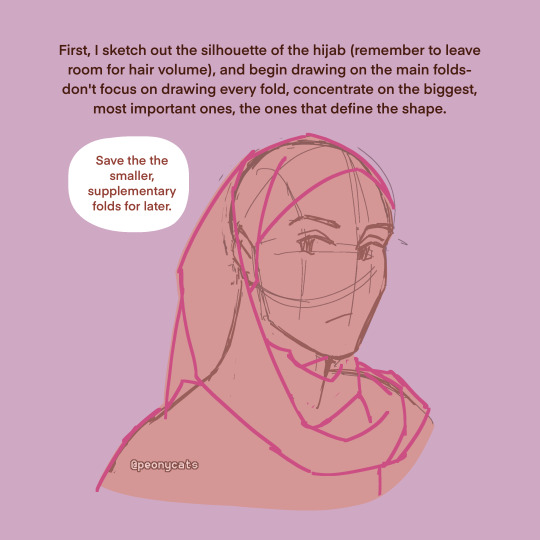

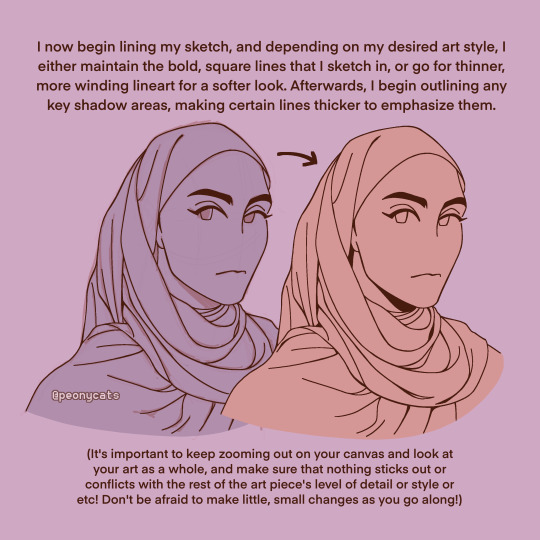
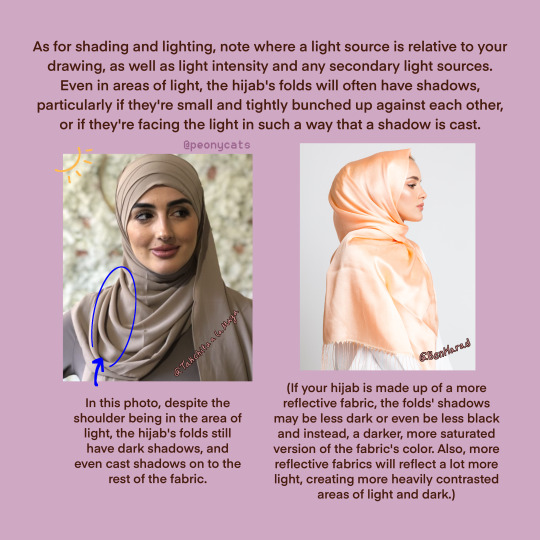
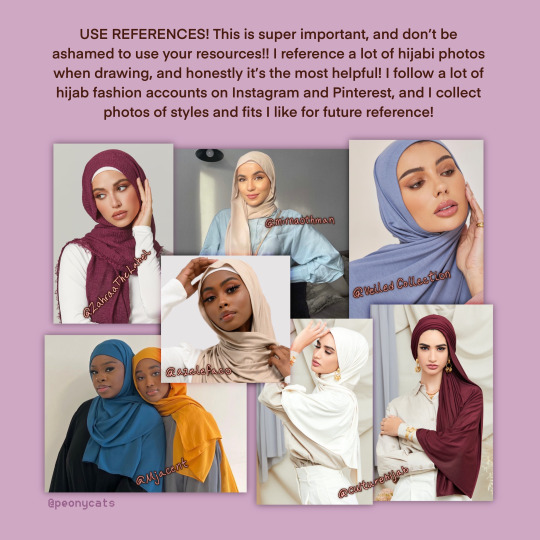

This tutorial is already taking so goddamn long, so I’m just gonna link my coloring and shading tutorial I did a month ago 😭😭

Gosh, I hope what I wrote made sense 😅 But thank you so much for the well wishes! Happy Ramadan (Eid Mubarak at this point WAHHH), and the same to you, may you and your loved ones have many blessings!!
ADDITIONAL REFERENCES
Winchester Meg's Hijab Drawing Tutorial
Souratgar's Hijab Drawing Tutorial
General Tips for Drawing and Shading Fabrics
#hijab#hijab tutorial#hetalia#aph nyo turkey#hws nyo egypt#hws nyo malaysia#hws nyo somalia#hws kuwait#hws nyo indonesia#hws nyo syria#hws nyo saudi arabia#hws nyo jordan#hws iran#aph persia#hws persia#hetalia ocs#historically inaccurate hair is historically inaccurate#AGHHHH THIS TOOK SO LONG!!#originally i didnt plan on drawing nyo indo here but eventually she got promoted to title card#tips#art stuff#aph iran#aph kuwait
18K notes
·
View notes
Note
Duke, talking to Steph: So he's prime Blorbo material.
Steph, nodding: So skrunkly.
Bruce, passing by: What does that mean?
Duke: Skrunkly?
Bruce: No, the other one.
Steph: Oh, a Blorbo is like. A character that you really like and will defend to your last breath no matter what they've done.
Duke: They're like your special little boy.
Bruce: Hmm.
*later*
Bruce: You're my Blorbo, Jason.
Jason: Alright, who the fuck taught you that?
Cue Steph cackling in the background
#annoying bruce is the only valid pastime#and it gives Steph life#duke catches on pretty quick#and while he doesn’t go about annoying Bruce outright#he enables Steph#and executes plans to perfection#no one can prove a thing#Cass gives him tips#Jason would be more supportive if it weren’t also causing him continued suffering#but at least Bruce is suffering too so it’s all good#duke thomas#stephanie brown#bruce wayne#jason todd#batfam#batkids#batman#blorbo
2K notes
·
View notes
Note
Hi I understand if you don't reply, but I was wondering if you have any advice to beginners who want to start making their ocs a reality? (Like in the sense of having Charecters that have been in your thoughts for a while, but it's hard to encapsulate them into physical form?) As I have some that id like to make either into a game or comic but I'm a little stuck..
Also I'm curious if there will be any other content with the best boy himself rire?? : 0
Hullo! Ah, (physically) designing characters, how fun ❤️ - there is part of a reason why I only have a handful of them lol XD; ANYWAY here are three things that help me, so hopefully they can help you as well :)
(I'll use Demon!Rire as an example as unless you are an old guard of mine, he will probably be the most recognisable of my characs.)
--------------
❓What do you know about them?
First of all since you already have your character in mind, congratulations you are most of the way there already! It's helpful to know the general vibe of them. And I don't mean the super detailed things that may arise from like..."Get to know your OC" quizzes - we are more looking for the core feeling of a character here. If you dumped this character into different AUs what things are going to stay the same/similar? Some things you should consider are:
What is their personality like? Why do they do the things they do?
Do I already have any physical traits for them in mind? Hair/eye/skin colour? Body type? Age? Name??
📝 Write a simple paragraph or some dot points about your character with these things in mind.
---EXAMPLE---
Sophisticated and charming, Rire outputs an aura of power and elegance. His pleasing physical appearance and gentlemanly demeanour usually enchants or commands people. Realistically, he is extremely manipulative and sadistic, and finds entertainment in the reactions of others.
---/EXAMPLE---
🤔 Make informed choices
Ok cool, you know something about your charac! Now build upon what you know to make them real - it is important here to try and match your design choices with the characterisation and "why"s of the character, and less with what you personally think will be cool/cute/whatever. What I mean by this is just pretend they are a person you are describing to a forensic sketch artist - you are giving "facts" as to what you think they look like not making stuff up (eg you would NOT be like "oh yeh she was totally a punk rocker however i'm going to say she wore a long flowing gown cos I think she'd look prettier in it?"*)
*Note that designing a character with opposites in mind can work out if you can at least answer the cursory "why" of it being a part of the character design. For eg maybe the punk rocker is secretly the alter ego of a socialite - flowing gowns and high fashion by day, grunge by night. Like Batman.
📝 Feel free to use dress up doll games and image searches for particular types of clothes/hairstyles/etc if you need inspiration. Thumbnail a bunch of different designs and see what works.
---EXAMPLE---
In my prev example paragraph I highlighted a few things in red. Here I'll break down how they can help craft a physical appearance:
Sophisticated and charming / elegance - to me, these combined make me think of ballrooms and black tie functions and nice suits. A well tailored outfit and someone who knows how to wear them.
Gentlemanly demeanour (well to some degree lol) - since I already know he's hundreds of years old (973 to be exact) I decided that an aristocratic Victorian-esque aesthetic would suit him. Somewhere in between a modern look and something with a bit more fantasy steampunk flair. He smiles quite genially until he's doing it with all his teeth.
Aura of power - he's got to be a bit of an imposing character so he's quite tall (or at least taller than all of my other characs) and carries himself confidently. Hooray for the ability to loom. Dark colours for this character, to cut an impressive figure.
Pleasing physical appearance - kinda stereotypical type of good looks that aesthetically most people would be like "yeh he's pretty". Athletic build - muscular but not bulky, broad shoulders, tapered waist etc etc.
Extremely manipulative - first of all, he looks rather human, for a demon - his entire species is designed very particularly like that. Then there's the sunglasses. The "why" [does he wear them] is they function to hide his eyes (one of the main parts of him that give away his demon-ness), but also as a bit of a red flag to the audience that something isn't quite right with him. I mean, look past his charm and he wears them all the time. The black and yellow colour scheme also ties in as warning colours ⚠️
Put them all together and this was one of my first sketches of Demon!Rire.
*Note that I already more or less knew how he looked other than his outfit; you will probably have a lot more sketch duds as you figure out what your character looks like.
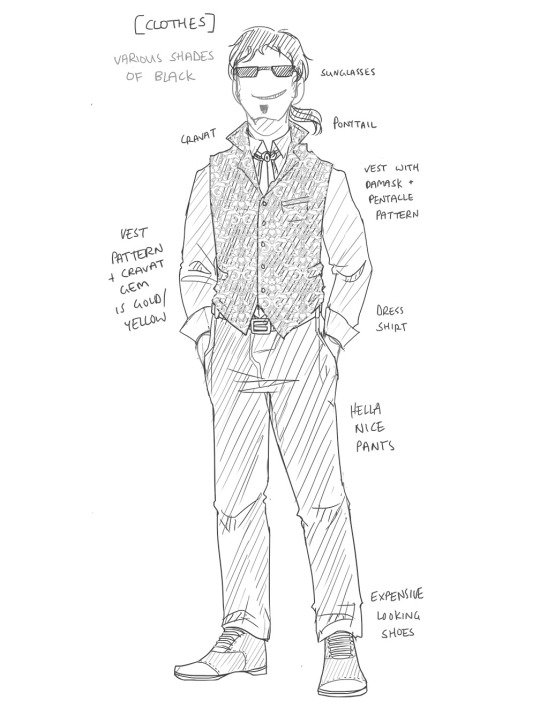
---/EXAMPLE---
🔐 Don't lock yourself in
Despite the fact I've just said "pretend your character is a person", remember you're still their creator so obviously you have final say over them. Sometimes you'll find that they grow and change from what you initially thought of them (or you just evolve in how you draw them). Don't be afraid to make the tweaks and changes that enhance these - whether they be physical or core characteristics - and you'll get closer to the true character you always had in mind.
---EXAMPLE--
I now draw Rire with a more pronounced V-shape, longer, wavier hair, and somehow he ended up with way more pronounced eyelashes than I usually draw on my male characs. Which works out quite well considering how I tend to draw his eyes. Anyway the point of this is that these things developed over time as I kept drawing him.
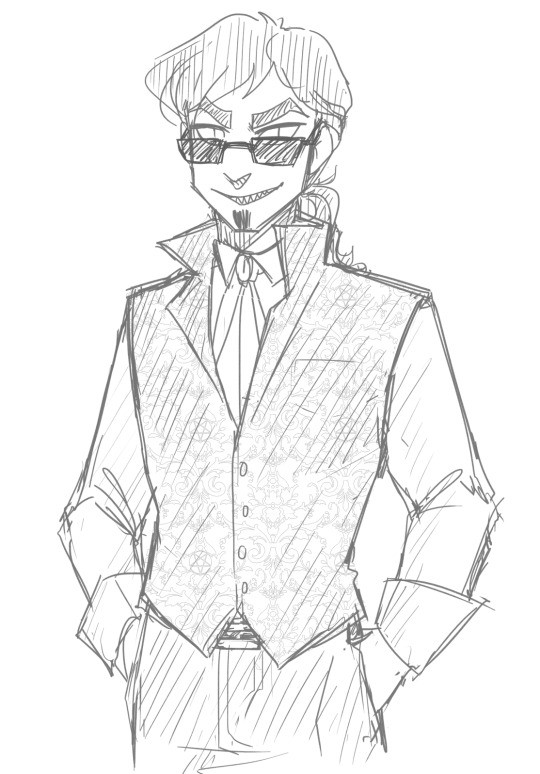
---/EXAMPLE---
🍀 Try it out with your own characs! Have fun and don't force yourself to try and get it "right" on the first go.
#prettyboysmakegravezz#character design#ref#character design tips#hope this is kinda helpful!#also honestly have fun aye#long post#also as for other content with rire there kinda is but he's not really the main charac lol#also who knows when that will come out im a bit pedantic planning a webcomic#sz
579 notes
·
View notes
Text
Stripping away Supports
In classic outlining structure, the midpoint is where your MC loses all the advantages they’d relied on up until that point—allies, resources, powers, etc. In fact, this structure is used in so many films that the ‘characters fight at the midpoint’ is an easily found cliché throughout media.
However, there are other ways of stripping away your MC’s supports to achieve the same effect.
They fight
Okay I know I just implied we might want to avoid this, but why fix what’s not broke? The important part about following the ‘characters fight at the midpoint’ trope is to ensure the fight doesn’t start at the midpoint, but rather starts from the very moment the characters are seen with each other/meet. The fight should be about something that’s been brewing underneath all of their interactions from the beginning—the one thing they should’ve talked about but didn’t. The ‘elephant in the room’.
This fight is less of a fight but an unearthing of feelings, thoughts, and problems that have always been there, but have been ignored or avoided up until then. What’s the event that unearths these truths? Typically, something threatening or scary causes people to speak ‘out of turn’…
2. The protagonist chooses to go on alone
Something big happened, something so dangerous and scary that the protagonist intentionally pushes away their allies in order to protect them… Of course, later they might realize that they are stronger together anyway. This is also a bit of a cliché, but done thoughtfully can be very impactful.
3. The allies are in over their head
The reversal of the last trope, instead of the protagonist pushing their allies away, the allies decide this quest is far too dangerous and risky for them… The protagonist is abandoned by their allies. Later, these supports may return, their love for the protagonist stronger than their fear of the situation, but whatever happened must have spooked them bad enough to lead them to betrayal.
4. An integral piece they’ve been relying on has been destroyed
The hideout was found and torched, the old man’s journal was tossed into the sea, the leader/mentor/keeper of information has been kidnapped or killed. Maybe the allies and the protagonist are still together, but one important thing that’s been keeping them together or leading them has been lost, now they have to adapt and improvise on the fly if they wish to continue their quest.
5. An integral piece they’ve been relying on turned out to not be true or important
Similar to the last but with a bit of a twist. They’ve been following the wrong lead all along—where to go next now that the very foundation of their quest is crumbling beneath them?
What are some other ways of fulfilling the midpoint reversal?
#writing#writers#writing tips#writing advice#writing inspiration#creative writing#writing community#books#film#filmmaking#screenwriting#novel writing#fanfiction#writeblr#midpoint#midpoint reversal#stripping away supports#outlining#planning
580 notes
·
View notes
Text
Conducting a War
So, your story takes place during a war. Maybe your characters are experiencing war or maybe they're waging war against other characters or groups. Likely, you are not a general or expert in warfare. How do you write a story that is set during a war?
Who's fighting who?
The first, most obvious, step is to know who is fighting whom and why. Wars are between groups of people. They can be a small clan, a massive nation, or even an entire planet or galaxy. Two characters fighting it out are not considered "at war" because they are representing themselves and settling an individual dispute, even if it is a high-stakes dispute.
Why are the parties in your story fighting? There are a lot of different reasons why two groups of people would go to war against each other, but most wars are over resources at their center. Disputes over land and borders, over who gets what crops and for what price, and even religious wars are usually about the resources available and scarcity. So when you're talking about war, you need to know what either side wants. Just like a character, your war parties need to have desires and stakes.
"Resources" can mean just about anything that society needs. Food, fresh water, opportunities for trade, minerals, metals, building materials, and wealth are all examples of resources your war parties can fight over.
What does it take to wage war?
Wars require resources too. It's not just about getting resources but spending resources as well. When nations go to war in the real world, there are opportunities for people to make exorbitant amounts of money and wealth by taking advantage of a wartime economy.
The parties waging war need people to fight their battles. They need to pay those people, arm them, feed and clothe them, and transport them to where they need to be. Where does the government or person in charge get the food, armor, weapons, and transportation? Where do they allocate those scarce resources? Oftentimes in war, those in charge must make sacrifices. Is there a portion of land that the person in charge gives up to protect another portion with their limited resources?
There are unlimited stories hidden in these questions, and a large base of world-building will help to answer these questions in depth. There are many opportunities for tension and rising stakes for your war parties in the event that the opposing side makes acquiring war resources difficult or impossible.
Types of Armies
Your armies tell you a lot about the resources available to your characters and how you can build your story and plot line around the war. So I'll discuss the differences between four types of armies that exist in the real world and throughout history. These are examples; you can change or twist these examples however best suits your story.
The first is a professional army. These guys are paid and trained by the state; being in the army is their entire job. The army can fill a number of different roles other than fighting, but their purpose is to provide martial protection to the people of their nation and carry out martial orders from the government or sovereign entity in charge. Important aspects of a professional army to consider: these soldiers are paid for their work, they are trained by professionals, and oftentimes they follow a hierarchy or chain of command. Most governments provide medical care to their professional armies, but this isn't required. The soldiers can be conscripted or voluntary.
Next up is a mercenary army. This army is also paid for their services, but they are not trained by the state, and they ultimately take their orders from the organization, not the government. The government commissions the mercenary army for their services. The government does not provide most of the resources required to maintain an army. They pay for the army but don't necessarily feed, arm, or clothe them.
A fyrd is a historical term that refers specifically to the Anglo-Saxon armies raised by different Lords and Thegns to protect their lands and shires. These armies consisted of civilians and able-bodied free men from the local settlements and farms gathered by the ealdorman. They were conscripted into the service, and they lacked formal martial training. Also, importantly, their provisions and weapons were provided by the soldiers themselves. Meaning you will see fewer long swords and forged weapons for the purposes of fighting and more axes and improvised weaponry. The purposes of the improvised weaponry are primarily as other tools, such as axes for chopping wood and knives for butchery. Any horses or mules brought along for work or fighting are the property of the lords or farm owners who provided them.
A militia is very similar to a fyrd; this army consists of civilians who are paid or conscripted into service by the government but are not professional soldiers. These militias may sometimes have training from professional soldiers among their ranks, but mostly they are civilians training themselves. The soldiers provide their provisions, weaponry, and armor, meaning that the wealth has to come from the soldiers and their professional jobs and not from their martial services. The militia is a more modern term, but it is marginally different in that most militias we think of today are voluntary and not conscripted.
Battle Strategy
This is where a little research may help you. Battles behave differently depending on different factors. What technology and weaponry is available to your war parties? Are we talking about bladed weapons or guns or lasers? Is your army a professional or mercenary army, or is it more like a fyrd or militia?
When setting up a battle in your story, focus on the differences between the two armies and how that may affect their strategy toward fighting or engaging the enemy. If your fyrd faces a professional army, they may encounter some problems regarding weaponry and armor. Your fyrd will struggle to match a professional army in defending against well-made weapons and professional training. How do they work to compensate for those weaknesses?
When looking at two equally armed and trained armies, a general or battle strategist will look to the terrain to plan a battle. Generally, controlling the high ground helps in battles. If one army has a heavy cavalry presence, your opposing army may want anti-cavalry measures in place. Do they have the space to do so? Urban areas will lend themselves well to guerilla-style and urban warfare tactics. Jungles and forests will look different to hills and plains, and deserts bring unique problems to a battle that a mountainous terrain might not.
What is the battle for? Battles have a purpose; otherwise, there would be no value to the loss of troops. What is worth the risk of losing lives? Does the battle have stakes? Some stakes that might be worth conducting a battle over include taking control of a river pass, allowing naval trade and travel, cutting off control of a trade route to the enemy, or invading an important town or city to process and refine necessary materials.
Ending the War
The war will eventually end if your characters are lucky. But what ends a war? Wars usually end with agreements between the two opposing parties following surrender or extension of peaceful negotiations. Negotiating what each party needs or wants is an art in and of itself. Each party must come to the agreement that waging war further is more expensive and less rewarding than ending violent opposition with concessions made by either side.
Conclusion
Wars and battles are like characters; they have needs, desires, and stakes. Writing your characters in a war or battle will hinge on the needs and stakes of the greater war and story. Important questions to ask are: what are we fighting for? Who are we fighting? And what happens if we don't fight?
–Indy
#writing advice#writing tips#writing resources#writeblr#amwriting#writblr#writers of tumblr#writers on tumblr#writing help#writing guide#on writing#creative writing#writing#writers#writing about war#writing war#writing warfare#writing battle strategy#writing battle planning
925 notes
·
View notes
Text
How To Plan Your Day 🌒📝💡✨
Start the night before. What do you need to do tomorrow to meet your needs? Write down the most important tasks you want to complete the next day. This gives you a clear starting point in the morning.
Create a morning routine that is focused on your well being. Exercise, meditate, read etc.
Make a list of all the things you need to do. Put the most important things at the top of the list.
Divide your day into chunks of time. Decide when you'll do each task.
Estimate the time it will take you to complete each task.
If a big task seems too hard, break it into smaller steps.
Batch the similar tasks together for maximum efficiency.
Try to do one thing at a time. Multitasking might not help you get things done better.
Don't plan too many things. Only plan what you can really do.
Check your progress during the day. Change your plans if things are not going as expected.
At the end of the day, think about what you did and what's left. Learn from what went well and what didn't.
Finish each day with a quick clean up. What can do you now to set up your spaces and routines for both self care and efficiency.
Choose what you'll wear the next day, including clothes, shoes, and accessories. This saves you time in the morning and helps you avoid last-minute outfit decisions.
If you have to take things with you (like a work bag or gym bag), pack it with everything you need. This prevents you from rushing around in the morning to gather your things.
Lay out items you'll need in the morning, like your keys, wallet, or important papers. This way, you won't have to search for them when you're in a rush.
Take some time to wind down before bed. Read a book, practice some light stretching, or do something relaxing to help you sleep better.
Charge your phone, tablet, or laptop overnight so you start the day with fully charged devices.
Set your alarm for the time you want to wake up. Having a consistent wake-up time helps regulate your body clock.
Try to avoid looking at screens (phones, tablets, computers) at least an hour before bed. The blue light from screens can interfere with sleep.
Take a moment to reflect on the day and think about what you're looking forward to tomorrow. Visualizing a positive morning can help set a good tone for the next day.
Pick a weekly prep day and clean the house, meal prep, review your calendar and to do list for the week ahead.
#personal improvement#personal development#personal growth#morning routine#night time routine#planning#organization#glow up tips#self reflection#self development#self help#self improvement#selfimprovement#self care#it girl#clean girl#dream girl#girlblogging#dream girl journey#dream girl tips#advice#level up journey#goals
2K notes
·
View notes
Text

417 notes
·
View notes